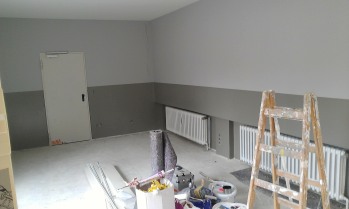5 home renovations that lower — or raise — your insurance costs
Chris Kissell
 Americans love to renovate their homes. Homeowners spent $130 billion on remodeling projects in 2013, according to U.S. Census Bureau data.
Americans love to renovate their homes. Homeowners spent $130 billion on remodeling projects in 2013, according to U.S. Census Bureau data.
Most people know that renovations can have a positive impact on their home’s property value. However, they may be less aware of how such projects can change their homeowners insurance costs.
Some remodeling projects bring insurance rates down — but others can cause them to rise. Following are five projects that impact home insurance rates in either a positive or negative fashion.
1. Adding a pool: RAISES costs
There are more than 5 million in-ground residential swimming pools in the United States, according to Association of Pool and Spa Professionals.
Installing a pool raises insurance costs, because the pool needs to be factored into the home’s overall rebuilding cost, says Lynne McChristian, Florida representative for the Insurance Information Institute.
In addition, your liability risk rises substantially if you have a pool. If someone is hurt or drowns in the pool, you could be sued.
The risk of such accidents is especially high among children. Between 2011 and 2013, an average of 4,900 children younger than age 15 were treated annually in U.S. emergency rooms for injuries associated with pools or spas, according to U.S. Consumer Product Safety Commission.
Between 2009 and 2011, an average of 390 children younger than age 15 died in such incidents each year.
While the average homeowners insurance policy includes a minimum of $100,000 in liability protection, III urges pool owners to consider increasing coverage to at least $300,000 to $500,000.
This increase could cost between $40 and $70 a year, McChristian says.
2. Creating a home office: RAISES costs
In 2010, 13.4 million people worked at least one day per week at home, an increase of 35 percent over the past decade, according to the U.S. Census Bureau.
The Census Bureau also reports that more than half of all small businesses operate out of private homes, according to the most recent figures available.
People who work at home typically have a home office. Having such a space in your home can raise your insurance costs.
“Most homeowners insurance policies have limited coverage for businesses that are run from home,” McChristian says.
III says most homeowner policies cover just $2,500 worth of business equipment in the home, and $250 when the equipment is away from your home — such as when you take your laptop computer on the road with you.
In addition, liability coverage may be limited — or even nonexistent — if a customer or client is injured on your property, McChristian says.
There are three ways to insure a home-based business. Very modest businesses with receipts of $5,000 or less can increase their business equipment coverage with an endorsement that costs around $20 annually.
Home-based businesses that need higher levels of business equipment and liability coverage can purchase a separate in-home business insurance policy, or a business owners policy. Costs begin at a few hundred dollars annually.
3. Upgrading your plumbing or electrical systems: LOWERS costs
Many insurance companies will give you a price break for upgrading your electrical or plumbing system.
For example, Farmers Insurance homeowners who improve their electrical systems are eligible for lower premium costs, says Carrie Bonney, a Farmers spokeswoman.
“As items are upgraded, their likelihood to be damaged or to cause damage — such as an electrical fire — is reduced,” she says.
Bonney says discounts vary by state and household, and declined to give a percentage range.
McChristian says discounts vary because savings depend on factors such as your home’s location, construction type, the materials used to build it and local building codes.
Some insurers are willing to offer specifics. For example, in some states, Allstate offers a discount of up to 10 percent for homeowners who update plumbing or electrical systems, according to spokesman Justin Herndon.
4. Building more living space: RAISES costs
If you add more living space onto your home — from an outdoor deck to a new bedroom — expect to pay more for home insurance.
“The additional premium depends on how much it would cost to rebuild or repair the structure, and to replace the fixtures and furnishings inside,” McChristian says.
Some people may be tempted to remain silent about the new space in hopes of keeping the premium costs low.
However, failing to inform your insurance company about an addition could leave the new space outside the scope of your insurance coverage. A partial or total loss in that area could result in a costly bill for you.
“When it comes to insurance, telling the truth means you don’t worry about having what you need to rebuild your home,” McChristian says.
5. Re-doing your roof: LOWERS costs
Installing a new roof also can net you a discount from some insurers. Allstate offers up to a 10 percent discount in some states, Herndon says.
Other insurers — including Nationwide, Farmers and State Farm — also offer discounts to homeowners with new roofs in some states, although the companies said the price break varies.
For example, at Nationwide, the discount depends on factors such as the type of roofing material used and the age of the roof, says Brad Lemons, vice president of property product and pricing at Nationwide.
An impact-resistant roof made of materials such as asphalt shingles, slate, tile or metal can protect you from damages, says Carole Walker, executive director of the Rocky Mountain Insurance Information Association.
See how much you could save today on your home insurance. Get your free home insurance quotes today!
